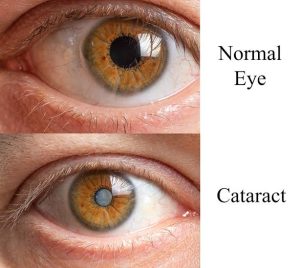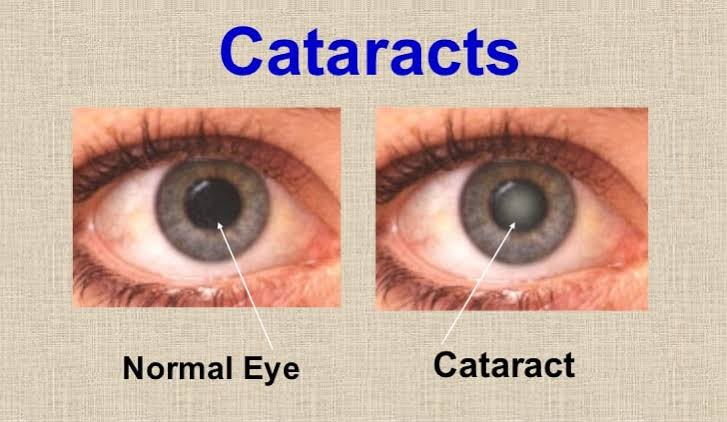The Veil Lifted: A Journey of Restoration
Margaret, a vibrant 75-year-old grandmother, had always been the pillar of her family. She spent her days tending to her garden, cooking for her loved ones, and sharing stories of her adventures. But over time, Margaret began to notice a subtle yet relentless thief stealing her joy: her fading vision.
At first, it was just a minor nuisance – a slight blurriness, a faint haze. But as the months passed, the fog grew thicker, and Margaret’s world began to shrink. She struggled to read, to cook, to even recognize the faces of those she loved.
The diagnosis was cataracts – a clouding of the lens in her eyes that was slowly suffocating her sight. Devastated, Margaret felt like she was losing herself, her independence, and her connection to the world.
But then, she met Dr. Rachel, a compassionate and skilled ophthalmologist. With a gentle touch and reassuring smile, Dr. Rachel explained the miracle of modern cataract surgery.
The procedure was a marvel of medical innovation – a minimally invasive, pain-free process that would replace Margaret’s cloudy lenses with crystal-clear artificial ones.
On the day of the surgery, Margaret’s family gathered around her, anxious but hopeful. As the anesthesia took effect, Margaret felt a sense of surrender, trusting that she was in good hands.
The surgery was a success. When the bandages were removed, Margaret opened her eyes to a world reborn. Colors were more vivid, edges sharper, and faces clearer. Tears of joy streaming down her face, she whispered, “I can see!”
With her vision restored, Margaret rediscovered her passions and reconnected with her loved ones. She tended to her garden with renewed vigor, cooked with precision, and shared stories with clarity.
Margaret’s journey was a testament to the power of medical treatment and the human spirit. The veil of cataracts had been lifted, revealing a brighter, more vibrant world – and a life worth living to the fullest.
This story highlights the impact of cataracts on daily life, the emotional toll of vision loss, and the transformative power of medical treatment. It showcases the expertise and compassion of medical professionals and the resilience of the human spirit.
What are Cataracts?

Cataracts are a clouding of the natural lens in the eye that affects vision. The lens, which is normally clear, becomes foggy or opaque, preventing light from passing through and focusing properly on the retina.
Causes
1. Aging: Most cataracts are age-related, occurring after age 60.
2. Injury or Trauma: A blow to the eye can cause a cataract.
3. Medications: Prolonged use of steroids, certain antibiotics, and other medications.
4. Medical Conditions: Diabetes, hypertension, obesity, and certain autoimmune disorders.
5. UV Radiation: Prolonged exposure to UV rays from the sun or tanning beds.
6. Smoking and Alcohol: Smoking and excessive alcohol consumption increase the risk.
7. Genetics: Family history and certain genetic disorders.
8. Infections: Certain infections, such as toxoplasmosis or herpes simplex.
9. Radiation Exposure: Exposure to radiation therapy or nuclear fallout.
10. Nutritional Deficiencies: Lack of essential nutrients like vitamin C, E, or omega-3 fatty acids.
11. Eye Diseases: Certain conditions like uveitis, glaucoma, or retinal detachment.
12. Surgery: Complications from previous eye surgeries.
Types
1. Nuclear Cataracts: Affect the center of the lens, causing nearsightedness and glare.
2. Cortical Cataracts: Affect the edges of the lens, causing glare, blurred vision, and difficulty reading.
3. Posterior Subcapsular Cataracts: Affect the back of the lens, causing glare, halos, and difficulty reading.
4. Congenital Cataracts: Present at birth or develop during childhood.
5. Secondary Cataracts: Develop as a result of another medical condition, such as diabetes or glaucoma.
6. Traumatic Cataracts: Result from eye injuries or trauma.
7. Radiation Cataracts: Caused by exposure to radiation therapy or nuclear fallout.
8. Age-related Cataracts: The most common type, occurring due to natural aging.
9. Anterior Polar Cataracts: Affect the front of the lens, causing glare and blurred vision.
10. Posterior Polar Cataracts: Affect the back of the lens, causing glare and halos.
Additionally, cataracts can be classified as:
– Mature: Fully developed, causing significant vision loss.
– Immature: Partially developed, causing some vision loss.
– Hypermature: Advanced, causing significant vision loss and potentially leading to complications.
Understanding the type of cataract is essential for determining the best course of treatment and ensuring effective management of the condition.
Pathophysiology
1. Lens structure: The lens is composed of water, proteins, and fibers. It maintains its transparency and refractive power due to the precise arrangement of these components.
2. Age-related changes: As we age, the lens undergoes natural changes, including:
– Accumulation of oxidative stress and damage
– Glycation of proteins (non-enzymatic binding of sugar molecules)
– Increased water content
– Disruption of fiber arrangement
3. Protein denaturation: The lens proteins, such as crystallins, become damaged and unfold, leading to:
– Aggregation and precipitation
– Formation of high-molecular-weight complexes
– Increased light scattering
4. Fiber disruption: The lens fibers become misaligned, causing:
– Light scattering and absorption
– Increased opacity
5. Membrane damage: The lens capsule and epithelial cells become damaged, leading to:
– Increased permeability
– Water influx
– Swelling and opacification
6. Inflammation and oxidative stress: The lens becomes inflamed, leading to:
– Release of pro-inflammatory cytokines
– Increased oxidative stress
– Further damage to lens proteins and fibers
These changes culminate in the formation of a cataract, characterized by:
– Opacification of the lens
– Scattering of light
– Vision impairment
Signs and Symptoms
Early Symptoms:
1. Blurred vision: Cloudy or foggy vision, especially at night.
2. Double vision: Seeing two images instead of one.
3. Ghosting: Seeing a faint image or shadow around objects.
4. Halos: Seeing a ring of light around lights or objects.
5. Sensitivity to light: Discomfort or pain from bright lights.
Advanced Symptoms:
1. Fading colors: Colors appear less vibrant or faded.
2. Difficulty reading: Struggling to read or perform daily tasks.
3. Difficulty driving: Trouble driving at night or in low light.
4. Difficulty recognizing faces: Struggling to recognize familiar faces.
5. Eye strain: Feeling tired or fatigued from using your eyes.
Other Symptoms:
1. Yellowing or browning of vision: A yellow or brown tint to your vision.
2. Redness or inflammation: Redness or swelling in the eye.
3. Eye pain: Pain or discomfort in the eye.
4. Flashing lights: Seeing flashes of light or sparks.
Important:If you experience any of these symptoms, consult an eye care professional for a proper diagnosis and treatment plan. Early detection and treatment can help preserve your vision and quality of life.
Prevention
1. Protect your eyes from UV radiation:
– Wear UV-blocking sunglasses and hats outdoors.
– Avoid prolonged exposure to direct sunlight.
2. Maintain a healthy diet:
– Eat foods rich in antioxidants (fruits, vegetables, nuts).
– Include omega-3 fatty acids (fatty fish, flaxseeds).
– Consume vitamins C and E, and beta-carotene.
3. Don’t smoke:
– Smoking increases cataract risk by 2-3 times.
4. Limit alcohol consumption:
– Excessive alcohol consumption increases cataract risk.
5. Control chronic conditions:
– Manage diabetes, hypertension, and obesity.
6. Avoid eye injuries:
– Wear protective eyewear during sports, DIY projects, or work.
7. Get regular eye exams:
– Early detection and treatment can prevent vision loss.
8. Wear protective eyewear during surgery:
– If undergoing eye surgery, ensure proper eye protection.
9. Avoid certain medications:
– Steroids, certain antibiotics, and other medications can increase cataract risk.
10. Stay hydrated:
– Drink plenty of water to maintain eye health.
Remember, some cataracts are age-related or unavoidable. However, by following these prevention tips, you can reduce your risk and maintain healthy vision.
Treatment and Management
1. Observation: Monitoring the cataract’s progression and vision changes.
2. Surgery: Removing the cloudy lens and replacing it with an intraocular lens (IOL).
3. IOL options: Choosing from various IOL types, such as:
– Monofocal
– Multifocal
– Toric (for astigmatism)
– Presbyopia-correcting
4. Phacoemulsification: A minimally invasive surgical technique using ultrasonic waves.
5. Extracapsular cataract extraction: A surgical method for advanced cataracts.
6. Using femtosecond lasers for precision.
7. Post-operative care: Following a recovery plan, including medications and follow-up appointments.
Management strategies include:
1. Corrective lenses: Glasses or contact lenses for vision correction.
2. Vision therapy: Exercises and techniques to improve vision.
3. Assistive devices: Magnifying glasses, telescopes, or closed-circuit TVs.
4. Lifestyle modifications: Adjusting daily activities to accommodate vision changes.
It’s essential to consult an eye care professional for personalized advice and treatment. They will help determine the best course of action based on the type and severity of the cataract, as well as individual needs and preferences.

